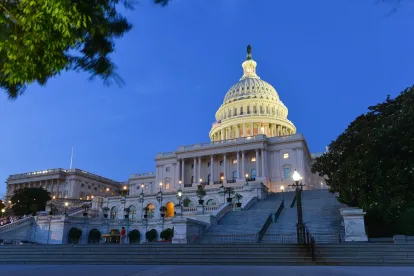As mentioned in our earlier posts, the American Rescue Plan Act of 2021 (“ARP”) provides a 100% COBRA premium subsidy for continuation coverage between April 1 and September 30, 2021 for certain assistance eligible individuals (“AEIs”). As employers and plan administrators prepare to educate AEIs about this subsidy, they cannot overlook another necessary notice: a notice to some AEIs that their subsidy is about to expire. Under a literal reading of the rules, this expiration notice might already be late! Plan administrators must act quickly to ensure compliance, especially with respect to those AEIs nearing the end of their COBRA continuation coverage in the upcoming weeks.
When does the COBRA premium subsidy end?
The subsidy ends on the earlier of:
-
September 30, 2021,
-
The date on which the AEI reaches the end of their maximum COBRA continuation coverage period, or
-
The date on which the AEI becomes eligible for Medicare or another group health plan (not including excepted benefits, a qualified small employer health reimbursement arrangement (QSEHRA), or a health FSA). AEIs must notify the plan sponsor if they become eligible for such coverage and failure to do so may result in a tax penalty.
Who needs to be provided with the COBRA subsidy expiration notice?
The subsidy expiration notice only has to be provided to AEIs who will lose the subsidy due to the first two events: either the end of (a) the COBRA subsidy period (September 30, 2021) or (b) their COBRA continuation coverage period.
When is the expiration notice due?
Plan administrators must notify AEIs at least 15 days (but no more than 45 days) before they will lose the subsidy.
Note: This deadline creates an immediate problem with respect to AEIs nearing the end of their maximum COBRA coverage period. For example, some AEIs will lose their COBRA coverage—and thus their right to a subsidy—at the end of April. Administrators must have provided these AEIs with a subsidy notice by April 15, before most plan administrators have even told AEIs about the subsidy in the first place. Given the possible challenges in timing the subsidy expiration notice, plan administrators should consult with counsel and consider their options for good faith compliance.
What must the expiration notice include?
Perhaps most obviously, the notice must explain in “clear and understandable language” that the AEI’s subsidy will expire soon and indicate the expiration date in a prominent way. But, as illustrated by the DOL’s model expiration notice, the notice must also detail other coverage options for which a special enrollment period may be available, including Medicare or group coverage through the Health Insurance Marketplace. Using the model notice as a guide, plan administrators should include information on the factors the AEI should consider in choosing among coverage options, how and when to enroll, and the difficulty (or in many cases, impossibility) of switching coverage options later. Further, administrators must note how much, if any, time remains in the AEI’s COBRA coverage period and specify the full, unsubsidized premium amount owed should the AEI choose to keep their COBRA coverage in effect.
Finally, plan administrators of insured plans should consider other applicable COBRA notice requirements. Specifically, COBRA rules have always required that insured plans provide notice to qualified beneficiaries of their option to enroll in a conversion health plan in the 180 days before their COBRA coverage period ends. In preparing subsidy expiration notices for such beneficiaries, plan administrators should consider including notice of any conversion options, particularly if they have not otherwise done so.
Next Steps
Time is of the essence. Plan administrators should work quickly to ensure compliance with the new subsidy expiration notice rules—while keeping track of other COBRA notice requirements—for AEIs who will lose the subsidy nearly as soon as they get it.




 />i
/>i
